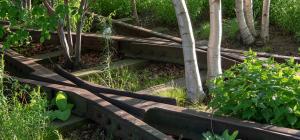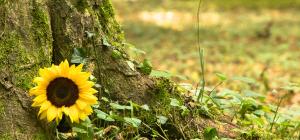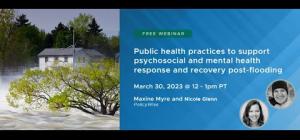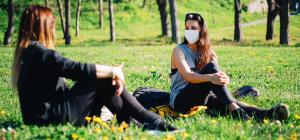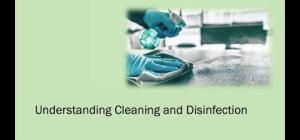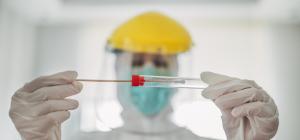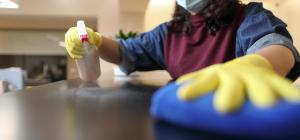
Human health risk assessments addressing artificial turf and crumb rubber

Public concern regarding the potential toxicological effects of exposure to artificial turf pitches has led to the publication of numerous human health risk assessments (HHRAs) on styrene-butadiene crumb rubber, the most common infill material used in these installations. An HHRA is a systematic, evidence-based process through which the potential for future adverse health effects can be estimated (as a probability) or characterized (identified or eliminated as a health concern). Unlike individual studies that look at the toxic components of crumb rubber, or how much of that toxic component is released, HHRAs follow a multi-step process in which the hazard (amount of toxicant released) is examined in relation to how or whether humans are exposed and whether adverse effects are in fact probable or possible at that exposure level. This process is necessary to distinguish between hazard (the presence of something harmful) and risk (the likelihood of being affected).
However, the quality of an individual HHRA is highly reliant on the knowledge and rigor applied to the process. The term “risk assessment” is used somewhat loosely in the grey and scientific literature, and so it is important to distinguish between those studies presenting preliminary or informal risk assessments versus those providing a much more rigorous analysis using standard methods and practices. In addition, because all HHRAs rely on a certain degree of expert judgement to account for unavoidable data gaps, it is critical for authors to fully describe the sources and limitations of the data used, and the methods or assumptions used to carry out the analysis. Finally, it is important to build relevant comparisons into the assessment, such that the knowledge user is able to understand how the results relate to other common exposures or activities.
To assist knowledge users in finding the most reputable sources of artificial turf information, we have compiled a table of the most recent HHRAs make meaningful contributions to the ongoing discussion on artificial turf. The HHRAs presented here meet the following criteria: 1) address the hazards and risks of third-generation artificial turf using styrene-butadiene crumb rubber infill or relevant comparisons; 2) are from peer-reviewed scholarly journals or public health or regulatory agencies with internal or external reviewers; 3) provide ample justification for the methods, data sources, and assumptions used; and 4) are in the English language. The studies were identified through a combination of periodic systematic literature search and other methods. To suggest additions or updates to this matrix, please contact [email protected].
For reference, cancer risk is deemed negligible (“de minimis”) when the excess lifetime cancer risk is at or below 1 x 10-6 (1 additional case of cancer per 1,000,000 exposed persons). Risk reduction is generally recommended when estimates exceed the maximum acceptable risk of 1 x 10-4 (1 additional case per 10,000 exposed persons). For non-cancer hazards, the level of concern is assumed to be negligible when the ratio of the estimated exposure dose to the reference dose is < 1 for a single chemical (a hazard quotient) or when these ratios are summed together for multiple chemicals affecting the same target organ or organ system (a hazard index). A hazard quotient or index > 1 indicates that adverse effects are possible, but is not a measure of the probability of adverse effects.
Table 1. Matrix of human health risk assessments addressing artificial turf and crumb rubber. Studies are presented in reverse chronological order. Abbreviations: 2-MBT, 2-mercaptobenzothiazole; HI, hazard index; PAH, polycyclic aromatic hydrocarbon; PCB, polychlorinated biphenyl; PCDD, polychlorinated dibenzodioxins; PCDF, polychlorinated dibenzofurans; PM10, particulate matter less than 10 microns in size; SVOC, semi-volatile organic compound; VOC, volatile organic compound.
|
Authors |
Material Studied |
Contaminants |
Users |
Exposure Pathways |
Supporting Data |
Findings |
|
Zhang et al. 2021 |
Run-off from five types of athletic fields composed of synthetic materials (crumb rubber and others) on a university campus in China. |
Cr, Pb, Cu, Mn, Cd, and As |
Young adults |
Dermal exposure to run-off |
Chemical analysis of field run-off collected after rainfall events; run-off will contain contaminants derived from field materials and deposition from the atmosphere and surrounding areas. |
Concentrations of Zn, Cu, Mn, Cd, and As were consistently higher in run-off from artificial turf fields compared to the running track, basketball court, badminton court, or tennis court. Non-negligible cancer risk was observed for all field types in relation to Cr, Cd, and As levels, but not Zn, Cu, Mn, and Pb. |
|
Cakmak et al. 2020 |
Dust from artificial surfaces and topsoil from 15 urban playgrounds in Serbia. |
Co, Cri, Ni, Fe, Mn, As, Cd, Cu, Pb, and Zn |
Small children |
Ingestion, inhalation and dermal exposure. |
Chemical analysis of dust collected from artificial surfaces, as well as topsoil samples. |
Non-negligible cancer risk was observed for As concentrations at all sites, regardless of surface type; notably As concentrations on playgrounds were roughly half those commonly found in Serbian soils. No other cancer or non-cancer risk was identified. The paper contains a useful discussion of the potential sources of contaminants examined. |
|
Schneider et al. 2020a |
Crumb rubber |
PAHs and heavy metals |
All ages groups, amateur and professional players, and goalkeepers specifically. |
Inhalation, ingestion, and dermal exposure |
Part of the European Risk Assessment Study on Synthetic Turf Rubber Infill (ERASSTRI) project. See also Schneider et al. 2020b,c. |
All cancer risk estimates well below de minimis levels. |
|
Peterson et al. 2018 |
Crumb rubber and natural turf fields with soils impacted by urban pollution. |
33 PAHs, heavy metals, VOCs, SVOCs, phthalates, and PCBs |
Youth outdoor player (6-18 years), youth indoor players (6-18 years), youth composite player (6-18 years), and adult and child spectators. |
Oral, dermal, and inhalation. |
Supported values from the literature with data solicited from rubber recyclers and synthetic pitch installers. |
The highest cancer risk (child spectator, 9 x 10-7) was well below de minimis levels. The highest hazard index (child spectator, HI = 1) indicated potential for adverse effects (primarily due to cobalt ingestion), but assumed that the child would consume 0.1 g of rubber per day, 4 days per week for 8 months of the year. For natural turf fields, with soils impacted by urban pollution (based on 95th percentile value for contaminants commonly found in urban soils), the highest cancer risk (6 x 10-6) and hazard index (0.7) were again for the child spectator. |
|
ECHA 2017 |
Crumb rubber |
PAHs, phthalates, formaldehyde, benzothiazole, benzothiazole-2-thiol, methyl isobutyl ketone, benzene, heavy metals |
Child players (3-6, 6-11 years), child goalkeepers (6-11 years), youth players (11-18 years), adult players and goalkeepers, and workers. |
Oral, dermal, and inhalation (dust and VOCs). |
From the literature. |
Neither the hazard estimates for non-cancer risks nor the excess lifetime cancer risk for PAHs approached thresholds of concern. |
|
RIVM 2017 |
Crumb rubber |
PAHs, BPA, cadmium, cobalt, lead, phthalates, and 2-MBT |
Small child players (4-11 years), youth goalkeepers (7 years old), youth players (11-18 years), adult players (18-35 years), and lifelong exposed field players and goalkeepers) |
Oral, dermal and inhalation |
Obtained crumb rubber samples from 100 synthetic turf pitches in the Netherlands (6 samples from each pitch). These samples were chemically characterized and compared to values from the literature. |
Most exposed adult player was a lifelong goalkeeper who played from age 4 to 50, and consistently swallowed 0.2 g of crumb rubber per session as a child (a pile the size of a quarter) and 0.05 g per session as an adult (3 x 10-6 for PAH exposure). The most exposed child was a 7-year-old goalkeeper who consumed 0.2 g of crumb rubber per session (HI = 0.26 for BPA exposure). |
|
Pavilonis et al. 2014 |
New fibers, new rubber crumb, and rubber crumb from 7 existing fields |
PAHs, VOCs, SVOCs, heavy metals |
Young children (6-10 years), older children (11-15 years), teenagers (16-18 years), adults (≥ 19 years). |
Dermal, ingestion, and inhalation |
Bioassays, laboratory off-gassing studies |
Results did not identify cancer or non-cancer risk from metals or SVOCs, although it was noted that lead levels varied widely and lead was found to be bioaccessible in simulated human fluid studies. |
|
Ruffino et al. 2013 |
Four crumb rubber pitches, 1 thermoplastic elastomer pitch, 1 natural turf, and traffic-related air pollution. |
Benzene, toluene, xylene, PAHs, and heavy metals |
Child and adult players. |
Dermal contact with crumb rubber or “rainwater” leachate, and inhalation of dust and gases. |
Collected 12 infill samples from each of 6 pitches in the city of Turin, Italy. Soil dust and gases also sampled. |
No risk estimate for any of the individual exposure pathways exceeded thresholds on any synthetic or natural field for children or adults. However, for both children and adults, the cancer risk and non-cancer hazard estimates for inhaling Turin’s typical traffic-related air pollution were greater than for inhalation of dust and gases emitted from the natural or synthetic turf pitches. Synthetic pitches generated similar or better risk estimates than did the single natural turf. |
|
Kim et al. 2012 |
Rubber chips from play-grounds |
Metals, toluene, ethylbenzene, and phthalates |
Elementary, middle school, and high school children, as well as adults and children with pica. |
Inhalation, ingestion, dermal |
Measured chips in 50 school |
Cancer and non-cancer risk at or below de minimis for all users, except children with pica who showed low-level cancer (1 × 10-4) and non-cancer risk. |
|
Ginsberg et al. 2011 |
Air sampled from 4 indoor and 1 outdoor artificial turfs. |
VOCs, SVOCs, nitrosamines, PM10, lead |
Child (12 years old) and adult players (30 years old). |
Inhalation |
Stationary on-field and off-field monitoring, personal monitoring, and laboratory off-gassing studies. |
Although a number of substances were found to be higher on artificial turf fields (especially indoors) compared to off-field locations, the cancer risk and non-cancer hazard derived from those concentrations were at or below de minimis levels for both children and adults. Comprehensive air quality analysis was necessary to differentiate emissions from artificial turf vs. urban contaminants or emissions from the players themselves. |
|
Menichini et al. 2011 |
Rubber granules from 13 outdoor fields. |
PAHs, PCBs, PCDDs and PCDFs |
Children |
Inhalation |
Stationary on-field and off-field samplers, and personal samplers worn at waist height to simulate exposure to children. |
Estimated cancer risk for benzo[a]pyrene exposure at de minimis level (1 × 10-6). |
|
Vidair 2010 |
Crumb rubber from outdoor fields |
PM2.5, bound metals, and VOCs on in-use and (separately) hot outdoor fields, compared to natural turf. |
Children (5-15 years), young adults (16-18 years) and adults (19-55 years). |
Inhalation and skin infection |
Air emissions during hot weather; bacteria present and abrasion rates on artificial turf compared to grass and sand fields. |
No public health risk due to PM2.5, lead in dust, or VOCs, although higher skin abrasion rates could increase the risk of skin infection. However, fewer bacteria were found on artificial turf compared to natural turf. |
|
Lim and Walker, 2009 |
Rubber crumb from 2 outdoor fields, on hot summer days |
SVOCs, VOCs, and PM |
Children |
Inhalation |
Upwind, on-field, downwind, and laboratory off-gassing studies to identify turf-derived components. Simulated play during PM measurements. |
Under hot weather conditions, SVOC, VOC, and PM emissions unlikely to pose a public health risk compared to contaminant exposures off-field. However, temperatures on the field were markedly higher compared to grass and sand surfaces. |
|
Nilsson et al. 2008 |
Desk study |
Benzothiazole; dicyclohexylamine, cyclohexanamine, dibutyl phthalate |
Young adults (16-19 years) |
Dermal and oral only |
Chemical and leaching studies to select substances of concern. |
No effects for the four chemicals studied, although maybe risk of allergic sensitization. |
|
Vidair et al. 2007 |
Playground surfaces |
Metals, VOCs, SVOCs |
Children (1-12 years) |
Oral and dermal exposure |
Wipe sample of playground surfaces and gastric digestion assays. |
Found de minimis levels of risk for one-time ingestion of 10 g of tire shreds by a three-year-old, based on values from the literature and a gastric digestion bioassay; found slightly above de minimis cancer risk for chronic ingestion of chrysene; no skin sensitization in guinea pigs. |
|
NIPH 2006 |
Two indoor artificial turf facilities |
VOCs, dust, phthalates, and alkyl phenols |
Children (7-11 years), older children (12-15 years), juniors (16-19 years), and adults (20-40 years). |
Oral, dermal, and inhalation for children only; dermal and inhalation for all other groups. |
Composition analyses, leaching, laboratory off-gassing studies, and dust wipe sampling. |
Neither inhalation, nor dermal, nor oral exposure to the contaminants listed were considered to pose a public health risk, although authors note the unknown risk of developing asthma or allergy to compounds present in dust in indoor facilities. |
References
-
Čakmak D, Perović V, Kresović M, Pavlović D, Pavlović M, Mitrović M, Pavlović P. Sources and a Health Risk Assessment of Potentially Toxic Elements in Dust at Children’s Playgrounds with Artificial Surfaces: A Case Study in Belgrade. Archives of Environmental Contamination and Toxicology 2020;78(2):190-205. Available from: https://doi.org/10.1007/s00244-019-00702-0
-
European Chemicals Agency (ECHA). Annex XV Report: An evaluation of the possible health risks of recycled rubber granules used as infill in synthetic turf sports fields: European Chemicals Agency, Helsinki, Finland; 2017. Available from https://echa.europa.eu/documents/10162/13563/annex-xv_report_rubber_granules_en.pdf/dbcb4ee6-1c65-af35-7a18-f6ac1ac29fe4.
- Ginsberg G, Toal B, Simcox N, Bracker A, Golembiewski B, Kurland T, Hedman C. Human health risk assessment of synthetic turf fields based upon investigation of five fields in Connecticut. J Toxicol Environ Health, Part A. 2011;74(17):1150-74. Available from: https://doi.org/10.1080/15287394.2011.586942.
- Kim H-H, Lim Y-W, Kim S-D, Yeo I-Y, Shin D-C, Yang J-Y. Health risk assessment for artificial turf playgrounds in school athletic facilities: multi-route exposure estimation for use patterns. Asian J Atmos Environ. 2012;6(3):206-21. Available from: https://pdfs.semanticscholar.org/433d/97b45ca358f772e9ea5d69994a8ff915be56.pdf
- Lim L, Walker R. An assessment of chemical leaching: releases to air and temperature at crumb-rubber infilled synthetic turf fields. Albany, NY: New York State Department of Environmental Conservation; 2009. Available from: http://www.dec.ny.gov/docs/materials_minerals_pdf/crumbrubfr.pdf.
- Menichini E, Abate V, Attias L, De Luca S, di Domenico A, Fochi I, Forte G, Iacovella N, Iamiceli AL, Izzo P, Merli F, Bocca B. Artificial-turf playing fields: contents of metals, PAHs, PCBs, PCDDs and PCDFs, inhalation exposure to PAHs and related preliminary risk assessment. Sci Total Environ. 2011;409(23):4950-7. Available from: https://doi.org/10.1016/j.scitotenv.2011.07.042.
- Nilsson NH, Malmgren-Hansen B, Thomsen US. Mapping, emissions and environmental and health assessment of chemical substances in artificial turf. Copenhagen, Denmark: Danish Ministry of the Environment, Environmental Protection Agency; 2008. Available from: http://www2.mst.dk/udgiv/publications/2008/978-87-7052-866-5/pdf/978-87-7052-867-2.pdf.
- Norwegian Institute of Public Health and the Radium Hospital. Artificial turf pitches - an assessment of the health risks for football players. Oslo, Norway: Norwegian Institute of Public Health and the Radium Hospital; 2006. Available from: https://www.isss-sportsurfacescience.org/downloads/documents/74wa3x7e22_fhiengelsk.pdf.
- Pavilonis BT, Weisel CP, Buckley B, Lioy PJ. Bioaccessibility and risk of exposure to metals and SVOCs in artificial turf field fill materials and fibers. Risk Anal. 2014;34(1):44-55. Available from: https://doi.org/10.1111/risa.12081.
- Peterson MK, Lemay JC, Pacheco Shubin S, Prueitt RL. Comprehensive multipathway risk assessment of chemicals associated with recycled ("crumb") rubber in synthetic turf fields. Environ Res. 2018;160: 256-268. Available from: https://doi.org/10.1016/j.envres.2017.09.019.
- Rijksinstituut voor Volksgezondheid en Milieu (RIVM). Evaluation of health risks of playing sports on synthetic turf pitches with rubber granulate: scientific background document. Bilthoven, The Netherlands: National Institute for Public Health and the Environment (RIVM), Ministry of Health, Welfare and Sport; 2017. Available from https://www.rivm.nl/bibliotheek/rapporten/2017-0017.pdf.
- Ruffino B, Fiore S, Zanetti MC. Environmental-sanitary risk analysis procedure applied to artificial turf sports fields. Environ Sci Pollut Res Int. 2013;20(7):4980-92. Available from: https://doi.org/10.1007/s11356-012-1390-2.
-
Schneider K, Bierwisch A, Kaiser E. ERASSTRI - European risk assessment study on synthetic turf rubber infill – Part 3: Exposure and risk characterisation. Science of the Total Environment 2020a;718: 137721-137721. Available from: https://doi.org/10.1016/j.scitotenv.2020.137721
-
Schneider K, de Hoogd M, Haxaire P, Philipps A, Bierwisch A, Kaiser E. ERASSTRI - European Risk Assessment Study on Synthetic Turf Rubber Infill – Part 2: Migration and monitoring studies. Science of the Total Environment 2020b;718: 137173-137173. Available from: https://doi.org/10.1016/j.scitotenv.2020.137173
-
Schneider K, de Hoogd M, Madsen MP, Haxaire P, Bierwisch A, Kaiser E. ERASSTRI - European Risk Assessment Study on Synthetic Turf Rubber Infill – Part 1: Analysis of infill samples. Science of the Total Environment 2020c;718: 137174-137174. Available from: https://doi.org/10.1016/j.scitotenv.2020.137174
- Vidair C. Safety study of artificial turf containing crumb rubber infill made from recycled tires: measurements of chemicals and particulates in the air, bacteria in the turf, and skin abrasions caused by contact with the surface. Sacramento, CA: California Office of Environmental Health Hazard Assessment; 2010. Available from: https://oehha.ca.gov/risk-assessment/document/safety-study-artificial-turf-containing-crumb-rubber-infill-made-recycled.
- Vidair C, Haas R, Schlag R. Evaluation of the health effects of recycled waste tires in playgrounds and track products. Sacramento, CA: California Office of Environmental Health Hazard Assessment; 2007. Available from: https://oehha.ca.gov/risk-assessment/report/evaluation-health-effects-recycled-waste-tires-playground-and-track-products
- Zhang X, Wang Y, Liu J, Jiang Y, Tian Y, Zhang Z. Distribution and Health Risk Assessment of Some Trace Elements in Runoff from Different Types of Athletic Fields." Journal of Chemistry 2021: 1-15. Available from: https://doi.org/10.1155/2021/5587057
[Last updated: March 1, 2022]

